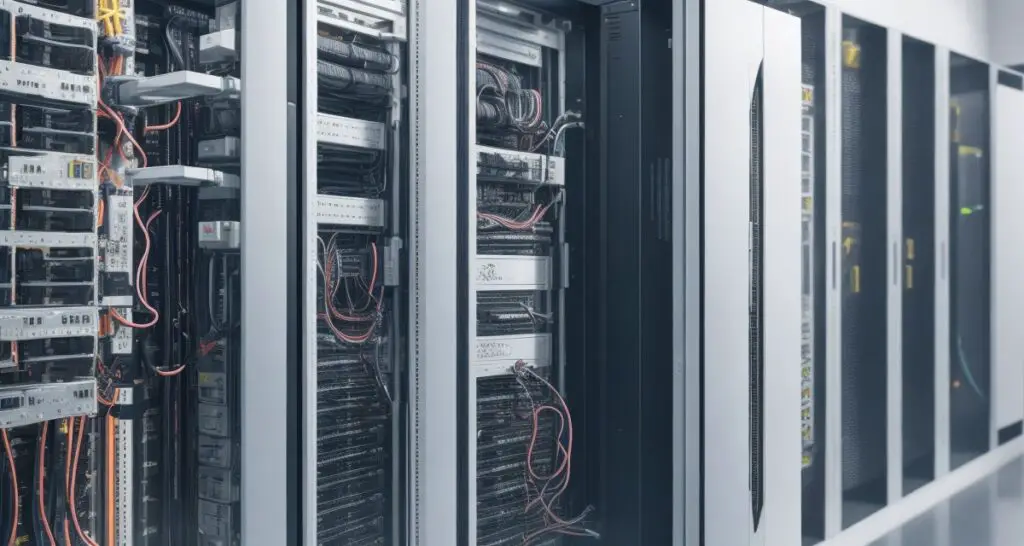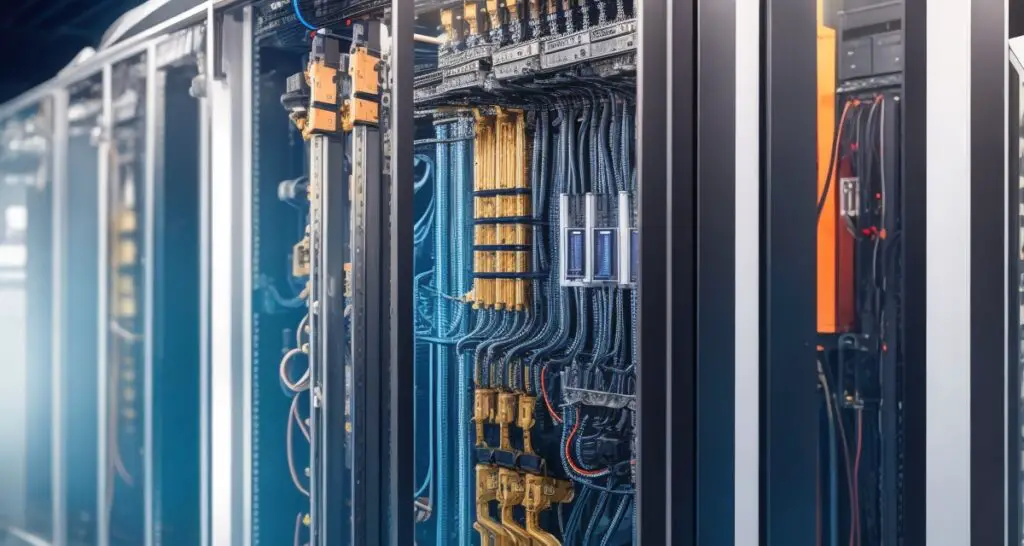In the realm of digital technology, the question is HOW MUCH FOR SERVER CHARGES IN 2023? servers stand as the unsung heroes, diligently working behind the scenes to enable the seamless functioning of our interconnected world. These unassuming yet vital components form the backbone of digital operations, facilitating the delivery of data, applications, and services to our devices, whether we’re browsing the web, sending emails, or streaming content.
Servers play a pivotal role in storing, processing, and distributing information across networks, ensuring that businesses, organizations, and individuals can access resources and data with remarkable speed and reliability. From web servers hosting websites to database servers managing vast volumes of information, these silent workhorses are the linchpin of modern computing.
In this exploration of servers, we will delve into how much for server charges in 2023 their diverse types, functions, and the pivotal role they play in our digital landscape, shedding light on the intricate web of connectivity and efficiency they weave into our daily lives. So, join us as we embark on a journey to demystify the often-overlooked yet indispensable world of servers.
The Purpose and Utility of Servers

Business servers are meticulously configured to fulfill distinct operational roles, which are intricately tied to the unique characteristics and requirements of the enterprise. To gain clarity regarding the cost implications of a chosen business server, it is imperative to discern the intended functions it will serve.
Application Hosting:
Business servers often act as hosts for critical applications. These applications vary widely, encompassing everything from customer relationship management (CRM) software to enterprise resource planning (ERP) systems. The cost considerations for a server dedicated to application hosting are contingent upon factors such as application complexity and user volume.
Email Hosting:
The provision of email services is a common responsibility of business servers. Whether it’s managing internal communications or facilitating external correspondence, an email server plays a central role. Pricing is influenced by factors such as the number of email accounts and the level of security required.
File Storage and Sharing:
Business servers serve as repositories for important files and documents. They facilitate seamless sharing and access, enhancing collaboration within an organization. The cost structure of file storage and sharing servers hinges on factors like storage capacity and data redundancy.
Windows Domain Controllers:
Windows domain controllers are pivotal for user authentication and access management within a Windows-based network. The cost considerations for these servers revolve around factors such as the number of users and domain complexity.
Printer Servers:
Printer servers streamline print management in an organization, ensuring efficient use of printing resources. Costs may vary based on the number and type of printers connected and the level of print monitoring required.
DNS Servers:
Domain Name System (DNS) servers are integral for translating domain names into IP addresses, facilitating internet accessibility. The cost factors for DNS servers include domain complexity and traffic volume.
The choice and pricing of a business server are inextricably linked to its intended function within the organization. By aligning server specifications with operational needs, businesses can make well-informed decisions that optimize both functionality and cost efficiency.
Diverse Varieties of Servers

Servers are categorized based on their intended purpose, and they serve a diverse range of functions within the realm of technology infrastructure. Let’s delve into the various roles that servers play:
1. Storage Servers:
- One of the fundamental roles of servers is to serve as repositories for data storage. This becomes especially pertinent for businesses seeking a centralized location to store their files and data. For small businesses comprising approximately 20 users, the investment typically falls within the range of $5,000 to $10,000.
- In contrast, enterprises engaged in data-intensive activities like archival storage, video editing, and 3D design may witness significantly higher server costs, reaching up to $20,000.
2. Virtualization Servers:
- Another prevalent use of servers is for virtualization purposes, enabling the creation and operation of multiple virtual machines (VMs). This virtualization infrastructure empowers businesses to run diverse applications, such as active directory and email services, on a single physical server.
- The cost of implementing virtualization hinges on the number of virtual servers required, rendering a specific cost range challenging to pinpoint. Generally, the expenses correlate with the volume of virtual servers needed.
- It’s worth noting that while server capacity is essential, prudent planning ensures that you acquire the necessary performance without over-engineering, akin to acquiring a high-end gaming PC for simple web browsing and email tasks. Efficient consolidation of servers is key to avoiding overinvestment.
3. Remote Desktop Servers:
- Servers designated for remote desktop usage provide a private cloud-like infrastructure that facilitates remote access. These servers often carry a higher price tag compared to standard servers, as they enable multiple users to access individual instances of Windows.
- The cost for a server accommodating 20 to 25 users typically ranges between $15,000 and $20,000 per server.
4. Specialized Task Servers:
- Businesses occasionally opt to procure servers tailored to specific use cases, such as dedicated servers for running critical business applications. For instance, a server dedicated to accounting functions exemplifies this scenario.
- The cost associated with specialized task servers is contingent upon the particular requirements of the services they will host. As such, cost estimates vary based on the scope and complexity of the designated tasks.
Factors Influencing Future Expenditures:
- Beyond the initial investment, it’s imperative to anticipate future costs associated with server maintenance and potential replacements. Servers, akin to automobiles, exhibit a performance curve over time.
- While some servers remain operational for a decade, others may require replacement within as little as two to three years. As a best practice, planning for server replacement every five years is recommended to ensure consistent performance and reliability.
Servers serve as versatile workhorses within the technology landscape, accommodating a myriad of functions. Their cost and longevity are subject to the specific needs and longevity of their intended use, necessitating a thoughtful approach to procurement and maintenance.
Understanding the Costs Associated with Server Acquisition

The acquisition of a server for your business necessitates a thoughtful consideration of various cost factors, with an estimated price range spanning from $1000 to $2500. To embark on this endeavor with prudence, it is imperative to delve into the multifaceted components contributing to the total cost.
Core Hardware Components:
- Central Processing Unit (CPU): Typically in the vicinity of $900.
- Hard Drive: Approximately $250, contingent on factors such as storage capacity and drive speed.
- Random Access Memory (RAM): An estimated cost of $350 for a 64 GB capacity.
- Chassis, Processor, Motherboard, and Power Supply: Costs can vary but generally comprise approximately $100.
Software Considerations:
- Operating System:
- Windows Server OS: Ranges from $500 to $4,000 per server.
- Linux: Generally available at no cost.
- Applications and Add-ons:
- SQL: Approximately $900.
- Exchange: Typically ranges from $700 to $4,000.
- SharePoint: Costs vary between $400 and $3,000.
- Citrix: Expenses generally fall within the range of $400 to $3,000.
Additional Expenses:
- Beyond the initial setup, it’s essential to budget for ongoing server-related costs, which encompass:
- Server Maintenance and Replacement: To ensure the server’s continuous reliability.
- Power and Cooling Costs: Necessary for optimal server operation.
- Hardware and Software Support: Essential for addressing potential issues and ensuring seamless functionality.
While the option of purchasing a pre-built server exists, it does come with certain limitations. Alternatively, opting for a custom server configuration enables you to tailor the specifications to your precise needs. This approach affords greater flexibility and control over your server infrastructure.
The cost of acquiring and maintaining a server involves a multifaceted breakdown of expenses. By meticulously evaluating each component and factoring in ongoing operational costs, businesses can make well-informed decisions that align with their budgetary constraints and operational requirements.
Establishing Your Physical Server Infrastructure

The process of configuring a physical server represents a multifaceted endeavor, often regarded as a complex undertaking. Many organizations opt to enlist the expertise of IT professionals to navigate this task efficiently. For those inclined to embark on the journey of setting up a business server, the following steps provide a detailed roadmap:
Hardware Configuration
The foundation of your server setup begins with the selection of the appropriate hardware components. Three primary categories of server hardware exist: rackmount, blade, and tower. Rackmount and blade servers are designed for installation within a CPU chassis, offering scalability advantages. Tower servers, resembling typical personal computers, are purpose-built for server functionality. As you embark on building your server, the inclusion of relevant hardware components, as mentioned above, becomes paramount.
The alignment of your server priorities plays a pivotal role in determining the most suitable use case. For instance:
- Database-Intensive Server: In this scenario, the incorporation of a Redundant Array of Independent Disks (RAID) server configuration proves indispensable. Multiple disks are configured to mitigate data overflow.
- Web Hosting Servers: Typically, these servers integrate database servers, necessitating elevated RAM requirements.
- File or Email Servers: These servers necessitate the inclusion of multiple hot-swappable drive bays, complemented by a moderate CPU configuration.
Software Installation
Once your hardware components are in place and synchronized, the installation of server software commences. This phase, while intricate, becomes more straightforward when your processes are meticulously organized. The steps involve:
- Connecting the hardware components.
- Initiating the installation software and following the guided setup process.
The final segment of the software setup entails:
- Establishing local administrative access for each device within your server network.
- Integrating related devices, such as printers, which interface directly with dedicated printer servers.
- Arranging data applications and uploading their respective data resources, accompanied by explicit instructions tailored to specialized software suites like Customer Relationship Management (CRM), Enterprise Resource Planning (ERP), or accounting software.
Configuring a physical server necessitates a methodical approach that spans both hardware and software aspects. By adhering to a structured process, individuals or organizations can effectively establish a robust server infrastructure that aligns with their operational objectives.
Unveiling the Key Elements of a Server
HOW MUCH FOR SERVER CHARGES IN 2023?
When investing a substantial sum, such as five thousand dollars, into a server, it’s essential to gain a precise understanding of the components that contribute to this expenditure. Let’s embark on a comprehensive exploration of the five primary components that constitute a server:
1. Form Factor:
- The initial consideration centers around the server’s form factor, i.e., the specific case in which it will reside. This determination hinges on several factors, including the number of servers required and the available storage space within the infrastructure.
2. Processor:
- The second pivotal component is the processor, responsible for orchestrating the execution of tasks. Unlike processors in typical digital devices, server-specific processors are meticulously engineered to collaborate seamlessly with other servers.
3. RAM (Random Access Memory):
- The third component, RAM (Random Access Memory), plays a pivotal role in enabling the concurrent operation of multiple virtual servers or accommodating simultaneous user interactions. Optimal RAM configuration is contingent on your specific server usage requirements.
4. Storage:
- The fourth constituent of your server infrastructure revolves around storage. When deliberating the choice of storage devices, meticulous consideration should be given to the following factors:
- Required storage capacity (in gigabytes or terabytes).
- The preference between traditional spinning disks, offering cost-effectiveness but at a slower pace, and modern SSDs, characterized by swifter performance but at a higher cost.
5. Power Supply:
- The fifth and concluding component pertains to the power supply. The capacity of the power supply unit directly influences the pricing tier. In the realm of servers, the recommendation extends to embracing dual power supplies, providing redundancy in the event of a power supply failure.
Bonus Component: Warranty
- While not an intrinsic component of the server per se, a warranty is a valuable addition. Despite contributing to the initial cost, acquiring a five-year warranty from your vendor proves prudent. This warranty serves as a safeguard against future complications, offering peace of mind should any component-related issues arise.
A server’s cost encompasses a nuanced amalgamation of these vital components. Deliberate consideration of each element aligns your investment with your operational needs while ensuring a resilient and dependable server infrastructure.
Navigating Your Choices Renting vs. Owning Your Server
When it comes to establishing your business server, you have three distinct options, each with its own advantages and disadvantages:
1. Renting a Server:
- Enjoy a predictable fixed monthly rate that covers hardware, cooling, power, security, and round-the-clock support.
- Gain access to cutting-edge hardware, with the flexibility to upgrade to newer servers as technology advances.
- Benefit from a 24/7 on-site support team ready to assist with any server-related concerns.
- Eliminate concerns about hardware replacement expenses, as we promptly replace any malfunctioning components.
- Experience enhanced reliability through redundant power, networking, and security features that are typically beyond the reach of an office setup.
- Achieve substantial savings on hardware expenditures.
2. Purchasing a Server:
- Make a single substantial upfront payment, with the flexibility to use the hardware until it becomes obsolete.
- Enjoy physical access to hard drives for offline data storage.
3. Server Colocation:
- Combine the benefits of server ownership with the reliability of a data center infrastructure.
- Maintain control and physical access to your server while leveraging the robust amenities of the data center.
The choice between renting, purchasing, or colocation depends on your business’s specific needs, long-term goals, and resource allocation preferences. Each option offers unique benefits and challenges, and a well-informed decision will align your server strategy with your overarching business objectives.
FAQS
How much does it cost to rent a server in 2023?
The cost of renting a server in 2023 varies depending on several factors, including the server specifications, location, and service provider. On average, you can expect to pay anywhere from $50 to $500 or more per month for server rentals.
Are there any additional charges associated with server rentals?
Yes, there may be additional charges for services such as data transfer, storage, and support. These costs can vary depending on your usage and the service provider’s pricing structure.
What factors influence the cost of server colocation in 2023?
The cost of server colocation in 2023 is influenced by factors like the size and power requirements of your server, the location of the data center, and any additional services you require, such as bandwidth or security.
How does the choice of server location affect pricing in 2023?
Server location can significantly impact pricing. Data centers in major metropolitan areas tend to be more expensive than those in less densely populated regions. The choice of location also affects factors like network latency and accessibility.
Is it more cost-effective to purchase a server outright in 2023, or is renting a better option?
Whether it’s more cost-effective to purchase a server or rent one depends on your specific needs and budget. Renting offers the advantage of predictable monthly costs, while purchasing provides long-term ownership but may require a larger upfront investment.

